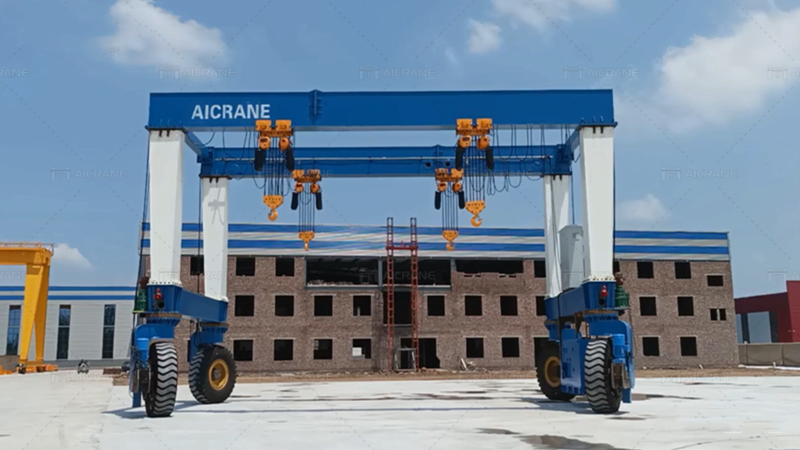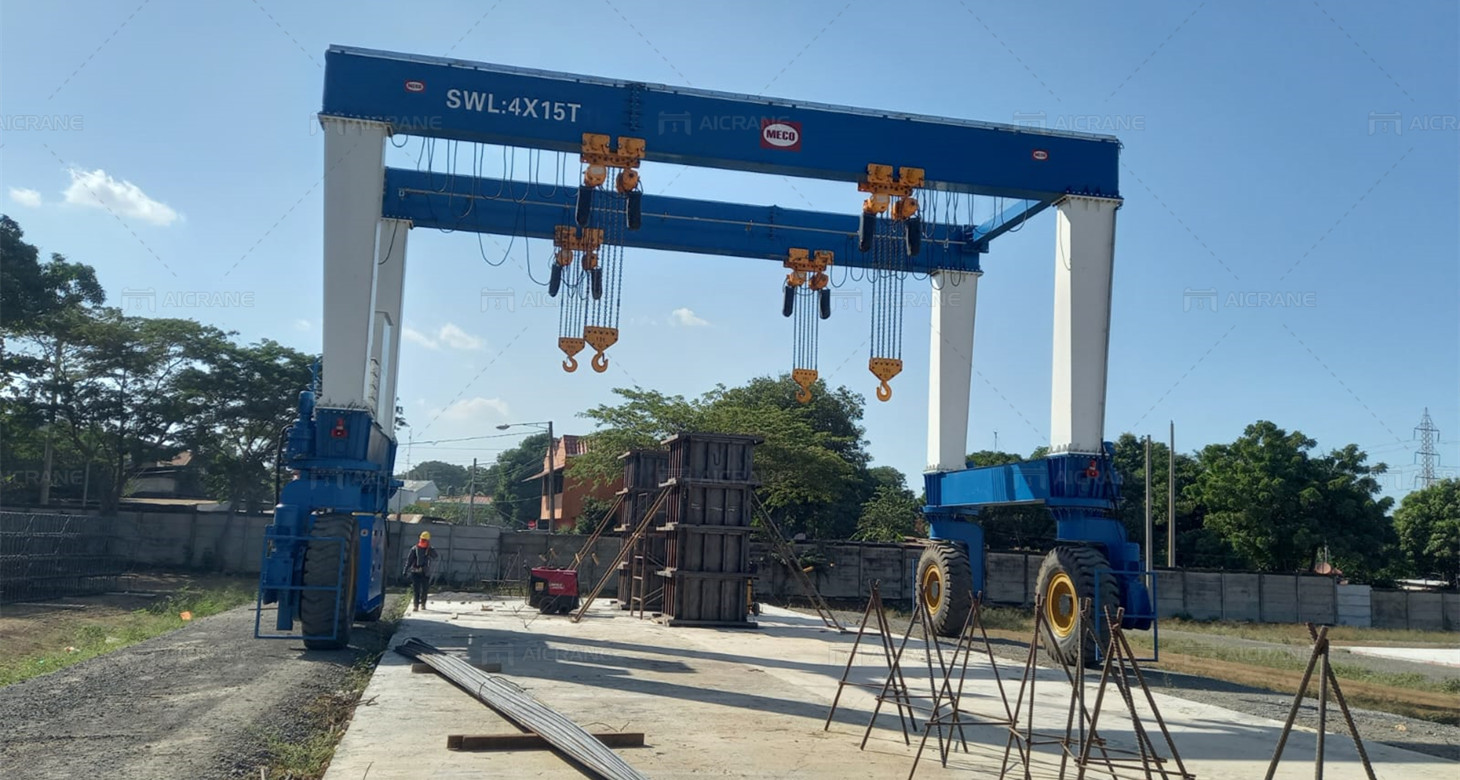Operating a rubber gantry crane requires attention to detail, adherence to safety protocols, and familiarity with the equipment. Rubber gantry cranes are commonly used in container terminals, shipyards, and other industrial settings for lifting and moving heavy loads, especially in areas where traditional rail-mounted cranes cannot operate. Here are several tips to notice for safe and efficient rubber gantry crane operation:

Pre-Operation Inspection
Before starting any lifting operations, conduct a thorough pre-operation inspection of the rubber gantry crane. Check for any visible signs of damage, wear, or malfunction in the crane structure, wheels, hoisting mechanisms, electrical components, and safety devices. Ensure that all safety features such as limit switches, emergency stop buttons, and overload protection systems are functional.
Operator Training and Certification
Ensure that operators are properly trained, certified, and familiar with the specific model and operation of the rubber gantry crane. Training should include safe operating procedures, load handling techniques, emergency response protocols, equipment maintenance, and hazard awareness. Operators should also be trained to communicate effectively with ground personnel and follow signals from spotters or signal persons.
Load Capacity and Center of Gravity
Know the load capacity of the rubber gantry crane and avoid exceeding it. Calculate the weight and center of gravity of the load to be lifted and ensure that it is within the crane’s rated capacity. Use appropriate rigging equipment, such as slings, shackles, and spreader bars, to secure the load and distribute weight evenly.
Terrain and Ground Conditions
Consider the terrain and ground conditions when operating a rubber gantry crane. Ensure that the ground is stable, level, and capable of supporting the crane’s weight and the loads being lifted. Avoid operating the crane on soft or uneven surfaces that could cause instability or sinking.

Weather Conditions
Monitor weather conditions before and during crane operations. Be aware of wind speed, rain, snow, or other environmental factors that could affect crane stability and load handling. Take appropriate precautions, such as reducing lifting speeds, securing loads, or suspending operations during adverse weather conditions.
Proper Positioning and Alignment
Position the rubber gantry crane correctly for the intended lifting task. Align the crane wheels parallel to the load and position the mobile crane within reach of the load without overreaching. Use wheel locks or chocks to prevent unintended movement during lifting operations.
Clearance and Obstructions
Ensure sufficient clearance around the rubber gantry crane and the load to avoid collisions with obstacles, structures, or other equipment. Maintain a safe distance from overhead power lines, buildings, vehicles, and personnel during crane operations. Use spotters or signal persons to guide the crane and alert operators of potential hazards.
Smooth and Controlled Movements
Operate the rubber gantry crane with smooth and controlled movements to prevent sudden jerks or swings that could destabilize the load. Use the crane’s controls to adjust lifting speeds, trolley movements, and hoisting operations as needed. Avoid abrupt starts or stops that could cause load shifting or damage.
Communication and Coordination
Maintain clear communication and coordination between the crane operator, ground personnel, spotters, and signal persons. Use standardized hand signals, radios, or other communication devices to relay instructions, warnings, and status updates during lifting operations. Establish a communication protocol and ensure that all personnel are familiar with it.
Emergency Preparedness
Be prepared for emergencies or unexpected events during crane operations. Have emergency response plans in place, including procedures for equipment malfunction, power failure, personnel injury, or hazardous incidents. Conduct regular emergency drills and training to ensure that all personnel know their roles and responsibilities.
Post-Operation Inspection and Maintenance
After completing crane operations, conduct a post-operation inspection of the rubber gantry crane to check for any damage, wear, or issues that may have occurred during use. Perform routine maintenance tasks, such as lubrication, inspection of mechanical components, electrical testing, and calibration of safety devices. Keep detailed maintenance records and address any issues promptly to ensure safe and reliable crane operation.
By following these tips and guidelines from the reliable manufacturer, operators can ensure safe, efficient, and reliable operation of rubber gantry cranes in industrial environments. Regular training, thorough inspections, proper communication, and adherence to safety protocols are key to preventing accidents and maintaining a productive work environment.